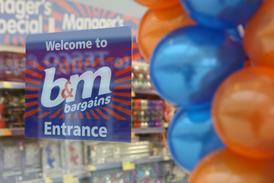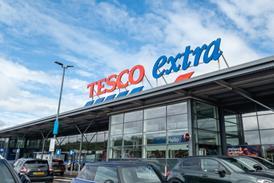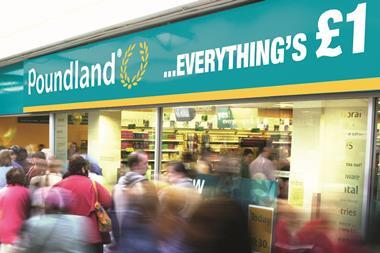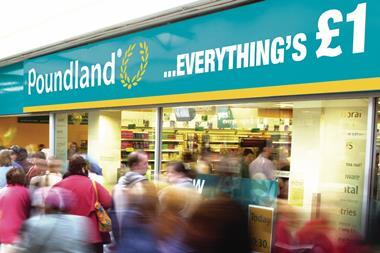Value retailers, including Poundland, B&M and Home Bargains, are raking in £5bn per year as 2.2 million new households turn to the stores.
The amount spent by UK shoppers at value retailers reached a new high of more than £4.9bn per year, which is up 17% on the previous year.
According to Nielsen retail performance data, around 78% of households in Britain have now shopped in value stores, with 52% of British households claiming to have shopped in Poundland.
Earlier this month, Poundland agreed to a takeover offer of £610.4m from South African retail suitor Steinhoff.
Of the increased spend at value stores, 31% is directly connected to a shift away from supermarkets and health and beauty retailers, the Nielsen data found.
The big four supermarkets are the most affected by this trend, accounting for 73% of spend shifted away towards bargain stores.
Nielsen’s UK head of retailer and business insight Mike Watkins attributed the increasing spend at value retailers to “the huge rise in first-time visitors” and “shoppers buying a larger repertoire of products from bargain stores – some of which they previously bought from mainstream retailers”.
Watkins said the growth in sales has also been driven by bargain stores moving beyond the £1 price tag, with a quarter of items costing more than that.
He said: “This resonates well with shoppers because removing the £1 ‘straitjacket’ allows stores to offer good value across a much wider range of products, which makes for bigger baskets and more expensive trips.”
Popular products
The most popular items at value retailers are household, packaged grocery, confectionery and health and beauty products, accounting for 63% of sales.
Although Watkins points out that, historically, shoppers visited value stores for ‘safe’ non-perishable goods, fruit and vegetables have had the biggest rise in popularity, albeit from a small base, over the past year in terms of number of shoppers and frequency of purchase.
Watkins said: “This is similar to what we saw some years ago with Aldi and Lidl which initially attracted shoppers with special buys for non-food items and low prices on groceries.”
Cumulatively, value retailers are now more popular than discount grocers Aldi and Lidl, which are visited by 75% of households.
Watkins said: “[Value retailers’] strong value-for-money proposition means they’re well-placed to continue to win market share, particularly as they continue to open new stores in retail parks and on the high street, and if Brexit turns out to affect purchasing.”
























No comments yet